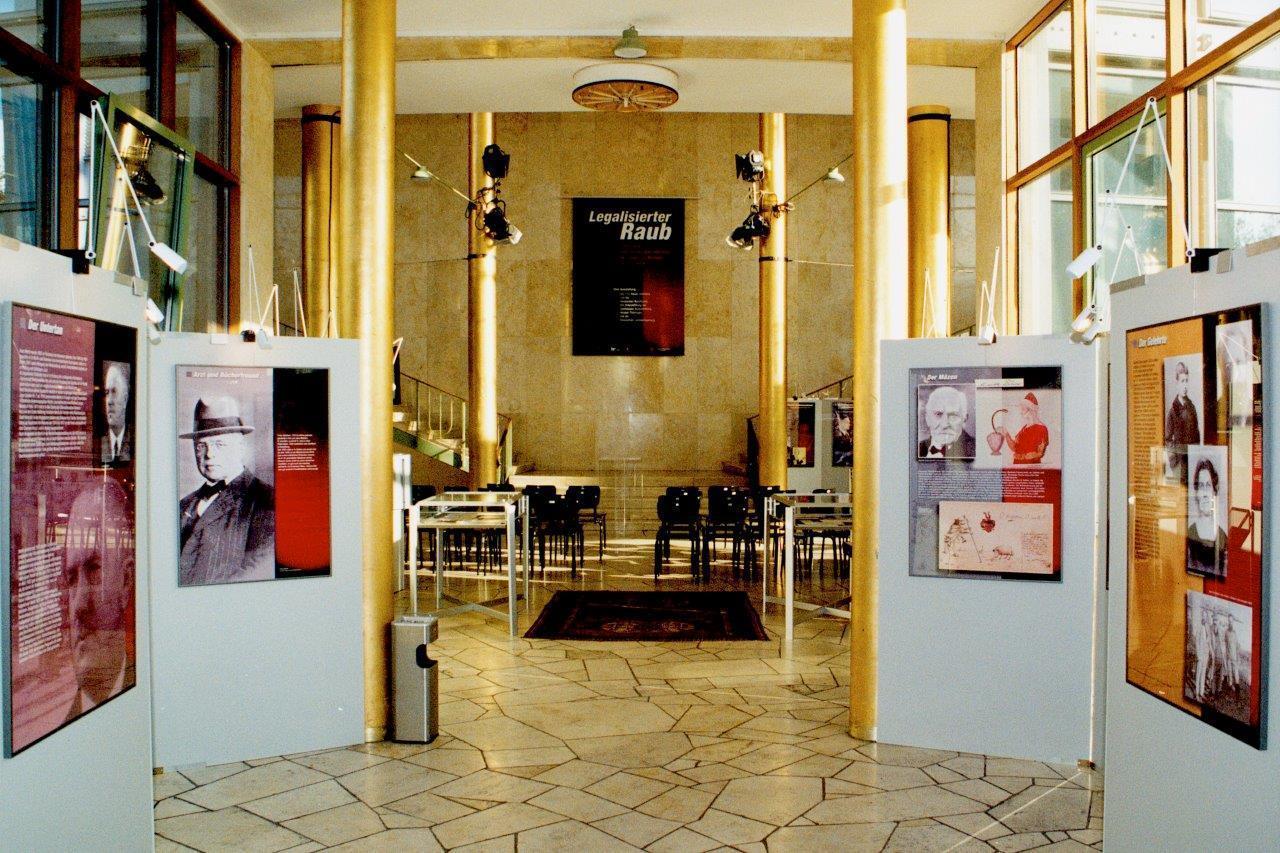
Legalized Robbery. The Treasury and the Plundering of the Jews in Hesse 1933-1945
It deals with the officials of the tax authorities who implemented the laws in cooperation with other institutions, and it tells of those who became victims of these measures. The exhibition shows how the German state profited from the persecution and murder of the Jews through the Reich Flight Tax, numerous special levies and finally through the complete confiscation of assets: from the people who were driven into emigration and from those who stayed because they lacked the money to emigrate or because they did not want to leave their homeland despite everything. After the deportations, public auctions of "Jewish property" took place everywhere: Table linen, furniture, children's toys, dishes, food changed hands.
History of the exhibition
The exhibition was created in 2001/2002 in a cooperation between the Fritz Bauer Institute and the Hessian Broadcasting Corporation with the support of the Sparkassen-Kulturstiftung Hessen-Thüringen and the Hessian Ministry of Science and Art. After the first presentation at the Hessischer Rundfunk in Frankfurt am Main, there were 28 stops in Hesse, Rhineland-Palatinate and the German Historical Museum in Berlin.
The presentation at the Historical Museum in Frankfurt is the 30th and last stop of the exhibition. Fifteen stories of plundered Jewish families were told when it was first presented in Frankfurt; today there are about 140 stories that have been researched as part of the project.
On-site research
For each location of the exhibition, a new regional focus has been developed – often in collaboration with schooldchildren: Which Jewish families lived locally? What did the anti-Jewish policies and plundering mean for them? Did they flee? Were they murdered? How did the neighbors and local politics behave? What was the process of "reparation" in the postwar period?
The starting point for the research were the files of the Nazi financial administration and the files from the reparation proceedings of the post-war period. The sources not only provide information about the plundering of the Jewish population. They can also be used to reconstruct biographies and fates. In addition, the exhibition organizers asked the inhabitants of each exhibition site for their participation via the press. In many families there are still different objects that remind us of our Jewish neighbors. In the exhibition, these objects tell the story of their original owners.

